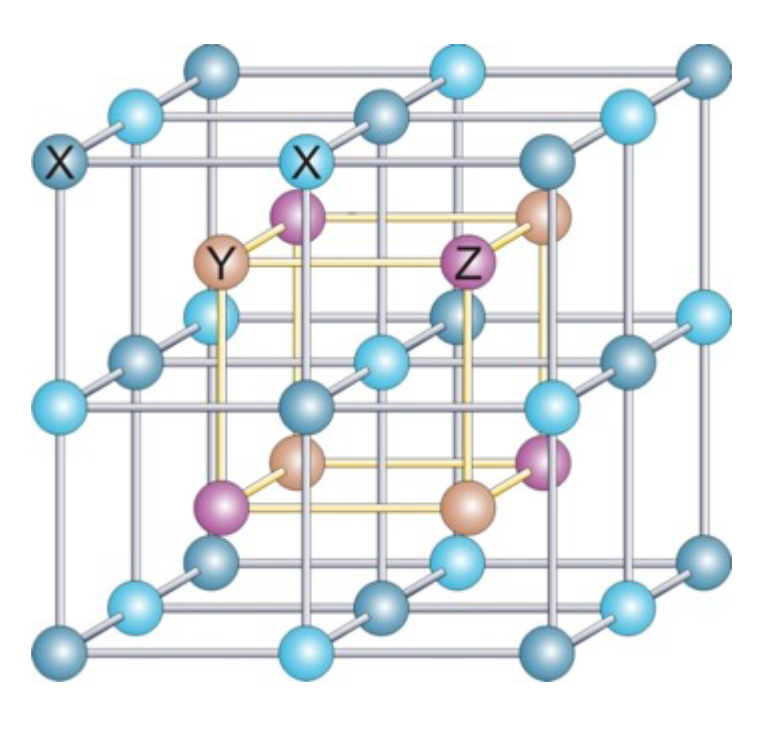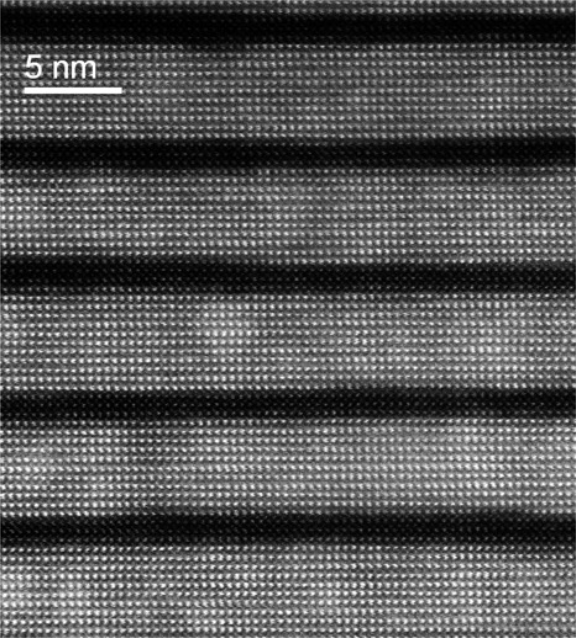The Problem:
MRAM currently utilizing ferromagnetic materials does not incorporate Heusler alloys in a superlattice configuration. The absence of this configuration limits the spin polarization which leads to the need for a larger power supply. Additionally, this effectively limits the scalability of the memory.
The Solution:
The novel technology utilizes two or more Heusler alloys (ferromagnetic alloys based on intermetallics with a particular composition and structure) and stacks them to form a superlattice (two or more alternating layers of superconducting materials. The layering of the Heusler alloys allows for uniaxial magneto crystalline anisotropy – through increasing spin polarization and improving the half-metallic properties. These improvements address the requirements of Spin-Torque Transfer MRAM – requiring lower power and allowing for improved scalability of this type of memory.
 Heusler Compound
Heusler Compound
 Superlattice structure example
Superlattice structure example
Benefits:
• High spin polarization.
• Perpendicular anisotropy.
• Lower power needed for MRAM.
• Better scalability.
The University of Alabama Office for Innovation and Commercialization(OIC) is a non-profit corporation that is responsible for commercializing University of Alabama technologies and for supporting University research. At OIC, we seek parties that are interested in learning more about our technologies and commercialization opportunities, and we welcome any inquiries you may have.